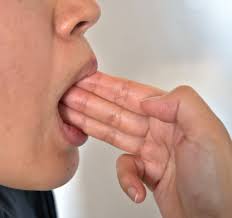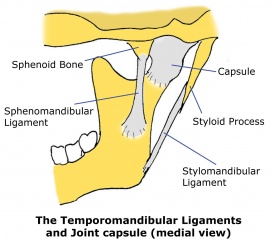For those who have experienced TMJ (temporomandibular joint) pain or TMD (temporomandibular disorder), they know it all too well. You might just have pain in the jaw area or an associated clicking or popping noise when you open and close your mouth.
The TMJ is the joint formed by your skull and jawbone and is moved by your chewing muscles. The joint structure resembles that of a sliding hinge and it allows for the opening and closing of your mouth as well as side-to-side movement. Think about the range of activities that this jaw undergoes in a day – chewing, talking, yawning, eating and many other associated actions.
TMJ pain can come from irritation of the muscles that accompany the joint or the neck and shoulders (pain referral), displacement of the small cartilaginous disc that’s part of the joint structure and/or arthritis or other joint disease that lead to dysfunctional movement of the TMJ.
Your risk of developing this kind of pain or dysfunction can increase from the following:
- Stress
- Teeth grinding (could be at night)
- Injury/direct blow
TMJ pain can be managed effectively by taking the appropriate steps that may include:
- Food modification (puree or softer consistency foods)
- Avoiding aggravating jaw movements
- Ice
- Stress reduction
- Jaw exercises/stretches (As shown below)
Gold Fish exercise – perform 6 sets of 6 reps daily.
Place your tongue on the roof of your mouth and one finger in front of your ear where your TMJ is located. Put your middle or pointer finger on your chin. Drop your lower jaw halfway and then close. There should be mild resistance but not pain.
You may repeat this exercise while dropping your lower jaw completely and then closing it. A variation of this exercise is to place one finger on each TMJ as you drop your lower jaw halfway and closed again.

Manual Release of Joint Capsule and Ligaments.
Easy way to measure: You should be able to place your index, middle and fourth finger vertically in between your teeth. The exercise below will help relax the ligaments and release tension in your Jaw.

TMJ trigger points:
Place your index finger inside your mouth on the outside of your teeth. Follow your teeth around to the superior (top) part of your TMJ. Find the Ligaments (This will be the tenderest part) that your chiropractor has shown you how to find. Hold this for at least 30 Seconds. Repeat several times on both sides of the jaw. The picture below shows the area you will be targeting.

Chiropractic care has also been shown to reduce the negative effects of TMJ pain and dysfunction. Upper cervical specific technique in particular addresses bones at the very top of your spine that closely influence the structure and muscles surrounding the TMJ. Our structural chiropractors at Revolution Chiropractic are trained in this technique and apply it when necessary. Co-management with a dentist may also be required.
However you choose to address your TMJ problems, just know that there are options available to you and that you can consult with one of our structural chiropractors on getting help.
Chiropractor Auckland
Contact Revolution Chiropractic – Leading Chiropractor Auckland
To Schedule your FREE CONSULTATION at Revolution Chiropractic E-mail or Call us on 09 418 3718.
You can also book online here !
Follow us on Instagram Or Twitter, connect with us on LinkedIn, become a fan on Facebook.
SUBSCRIBE TO OUR YOUTUBE CHANNEL FOR DAILY EXERCISE AND HEALTH ADVICE.
This blog is sponsored by Little Ninja & Priorityfitness






